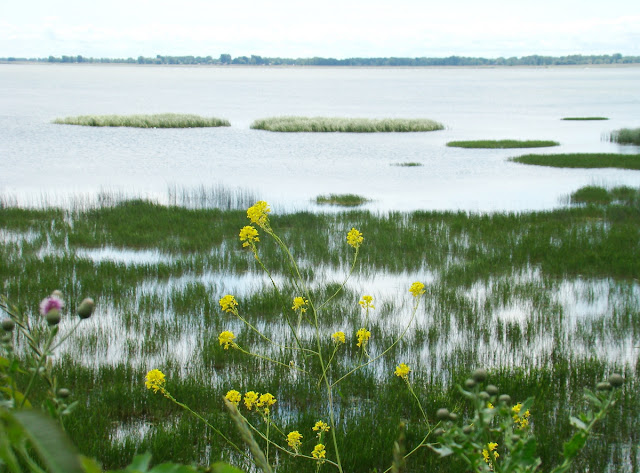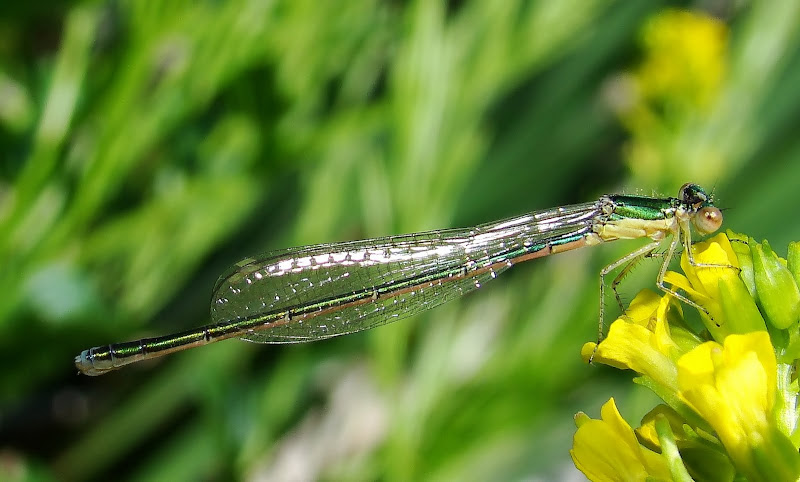 |
| Looking over the Inner Bay, Long Point |
There are places on Earth where over thousand birds stage during migration and where birders and other experts flock to cherish this grand congregation, one of such places is Long Point. Situated in Lake Erie, Long Point Sand spit was created over the last 4,000 years due to the high shoreline availability of glacial till, strong winds, variations in climate, hydrological cycle and seiches. These forces continue to shape Long Point, the largest sandy peninsula (or Sand spit) on the Great Lakes.
Long Point’s Inner and Outer Bays and their associated marshes are one of the most biologically important areas – not only for resident birds but for migratory waterfowls of North America as well. This is because Long Point falls under the Atlantic flyway of migrating birds, providing them stopovers for feeding. One can easily guess why thousands of birds decide to stop at Long Point Bay – it is diverse in its floral and faunal diversity – from various aquatic plants and animals to diverse insects on land – this land is as rich in providing fuel for the migratory birds as it is to feed the resident song-birds. Long Point is well known for its waterfowls, but this often leads to ignorance in the minds of the nature enthusiasts who come to cherish the biodiversity at Long Point. Waterfowls and song-birds, some mammals such as Grey Fox and Badgers are on top of the food pyramid – what we easily miss out here is what supports this wildlife – the lesser-known creatures such as snakes, arachnids and insects.
 |
| Sedge Sprite - Nehalennia irene |
Let’s dive into the Bay first. It is here that most waterfowls feed. Majority of the diet for some consists of aquatic plants – which are in sheer abundance. Some ducks feed on invertebrates in the water such as mollusks, crustaceans and insects – with insects being more diverse in water as they are on land. It is not surprising, therefore, to see migratory waterfowls staging here during fall. But there is more to Long Point than just sheer abundance of food. It is because of the geography of this place that makes it suitable for migration and resident fauna. Although Lake Erie is second most populated lake after Lake Michigan, thanks to the efforts of the Long Point Company, Long Point and the Bay was conserved for hunting in 1866. Also, the Big Creek watershed drains into the Bay, creating a rich wetland habitat. Besides this, thanks to the efforts of the government and locals for the extensive reforestation in early 1900s, the region is one of the best places for studying Carolinian life zones.
 |
| Wood Duck female with hatchlings and turtles peeping from the water |
Today, with private and government maintained forests; we can study as well as cherish the beauty of this land throughout all seasons – from winter to summer. Long Point attracts a lot of tourists, but it is the efforts of NGOs and local communities who have helped protect this place from being deforested and exploited. NGOs such as Bird Studies Canada, Long Point Waterfowl and Long Point Bird Observatory have played a significant role in conservation of not only the wetlands, forests and birds, but indirectly the little residents such as invertebrates as well.
 |
| Song Sparrow, Melospiza melodia |
It was at Long Point that I got my first break to explore the flora and fauna of Canada. After spending time trying to understand the scarce after-winter diversity of Medway Creek, I had the opportunity to study and work at Long Point Waterfowl, where I dove in the lake, ran after tiger beetles for hours, and observed this great biodiversity of Southwestern Ontario.
The insect diversity is as healthy as the birds at Long Point. From countless damselfly and dragonfly nymphs to various aquatic beetles and other insect larvae under water, and graceful butterflies like Tiger Swallowtails to little delicate ones such as Pearl Crescent, this sand haven is full of life during summer.
The bird life is stunningly beautiful as well – and not-so-hard to observe, as warblers go from every branch to branch, and through omnipresent grackles and black-birds, one can easily glance at the Ruby-throated Hummingbirds, or be lucky enough to see Bald Eagle fishing in the Bay.
The reptiles are everywhere, too – as Garter Snakes make their presence felt as one walks through the woods, one can easily see a Smooth Green Snake or the species-at-risk Hog-nose Snake as well.
 |
| Carolinian forest |
Life is booming everywhere as summer passes by, as new flowers give way to other flowers, continuously changing the landscape. This biodiversity is what fascinates me more than anything else. Yet this superficial harmony of Long Point is full of conservation concerns. A major reason is road-kills, from a White-tailed deer to a Blanding’s Turtle – everyone is at risk. There are various active projects to minimize these losses, but what really needs to be done is caution the drivers, and if possible, patrol the road once in a while to rescue the animals.
I have been working for Long Point Waterfowl for my internship, which is almost at its end. But I will never forget the plethora of natural knowledge I gained in mere four months.
For more pictures and information, visit my online slideshow:
Do the turtles prey on the little ducklings?
ReplyDeleteI think not, these are Painted Turtles which primarily feed on aquatic vegetation, insects and fish.
ReplyDelete